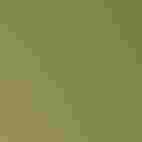Connecticut Warbler
At a Glance
For many birders, the Connecticut Warbler remains a little-known and mysterious bird. A sluggish and secretive warbler, it spends most of its time hidden low in woods and dense thickets, walking on the ground with slow and deliberate steps. It tends to migrate late in spring and early in fall, missing the peak of birding activity. Its northern nesting grounds (well to the north and west of Connecticut) are mostly in dense and impenetrable bogs.
All bird guide text and rangemaps adapted from Lives of North American Birds by Kenn Kaufman© 1996, used by permission of Houghton Mifflin Harcourt Publishing Company. All rights reserved.
Category
Perching Birds, Wood Warblers
IUCN Status
Least Concern
Habitat
Forests and Woodlands, Freshwater Wetlands, Shrublands, Savannas, and Thickets
Region
California, Eastern Canada, Florida, Great Lakes, Mid Atlantic, New England, Plains, Southeast, Western Canada
Behavior
Direct Flight, Flitter
Population
1.800.000
Range & Identification
Migration & Range Maps
Migrants enter and leave our area mostly via Florida, moving north-northwest in spring toward Great Lakes, moving south in fall mostly along Atlantic Coast. Migrates relatively late in spring and early in fall.
Description
5 3/4" (15 cm). On ground, walks deliberately (Mourning and MacGillivray's Warblers hop). Large, dull, with complete white eye-ring on gray hood. Nashville Warbler, active up in trees, has yellow throat.
Size
About the size of a Sparrow
Color
Brown, Gray, Green, Pink, White, Yellow
Wing Shape
Rounded
Tail Shape
Rounded, Square-tipped
Songs and Calls
A loud, ringing beecher-beecher-beecher-beecher or chippy-chipper-chippy-chipper.
Call Pattern
Flat, Undulating
Call Type
Chirp/Chip, Whistle
Habitat
Poplar bluffs, muskeg, mixed woods near water; in migration, undergrowth. In breeding season, in United States and eastern Canada, prefers bogs with black spruce or tamarack. In western Canada nests on dry ridges, and in open poplar or aspen stands. In migration, found in undergrowth of lowland woods or in dense thickets in meadows.
Sign up for Audubon's newsletter to learn more about birds like the Connecticut Warbler
Behavior
Eggs
Usually 4-5. Creamy white, with black, brown, or lilac spots. Incubation period and roles of the parents are not well known. Apparently only rarely parasitized by cowbirds.
Young
Both parents apparently care for young; age at which they leave the nest is not well known.
Feeding Behavior
Forages mainly by walking on the ground, seeking insects among the leaf litter, sometimes flipping over dead leaves. Also walks along branches, picking prey from crevices in bark. In migration, may forage in small flocks with others of its kind.
Diet
Mostly insects. Details of diet not well studied. Undoubtedly feeds mostly on insects, like other warblers. Reported to feed its young on green caterpillars, also seen eating spiders, snails; may sometimes eat seeds and raspberries.
Nesting
Males sing from trees to defend nesting territory. Nest: Hidden in sphagnum moss hummock. In poplar woods, placed next to bunch of dry grass or weeds. Nest is an open cup, constructed of leaves, grass, and bark strips, or sometimes a simple hollow in moss lined with finer stems of grass.
Conservation
Conservation Status
Status not well known, but no obvious declines in numbers. Would be vulnerable to loss of habitat, especially on wintering grounds.
Climate Threats Facing the Connecticut Warbler
Choose a temperature scenario below to see which threats will affect this species as warming increases. The same climate change-driven threats that put birds at risk will affect other wildlife and people, too.





